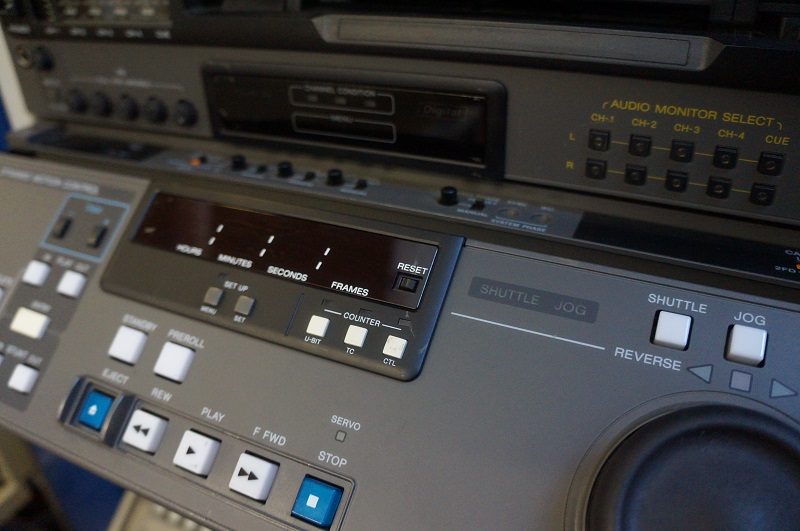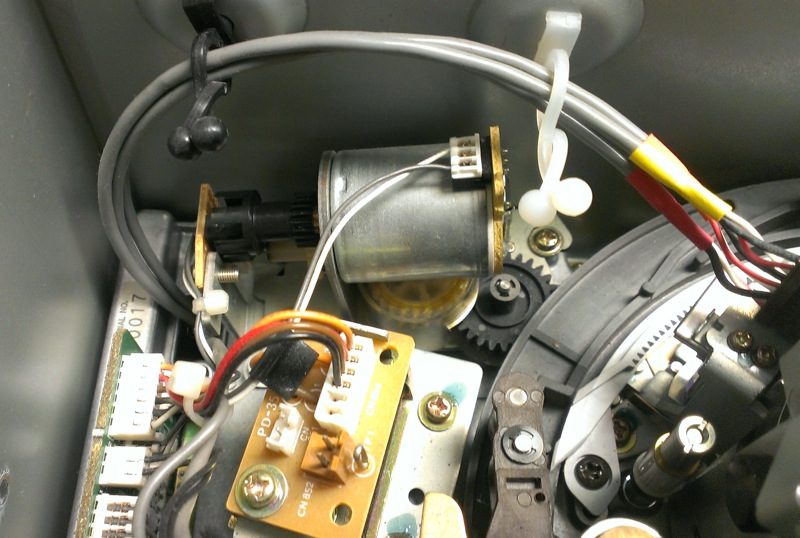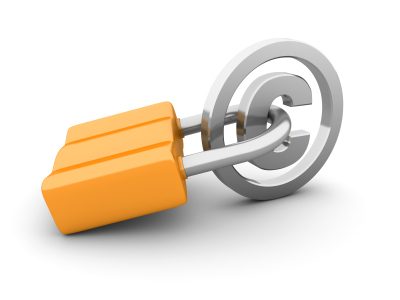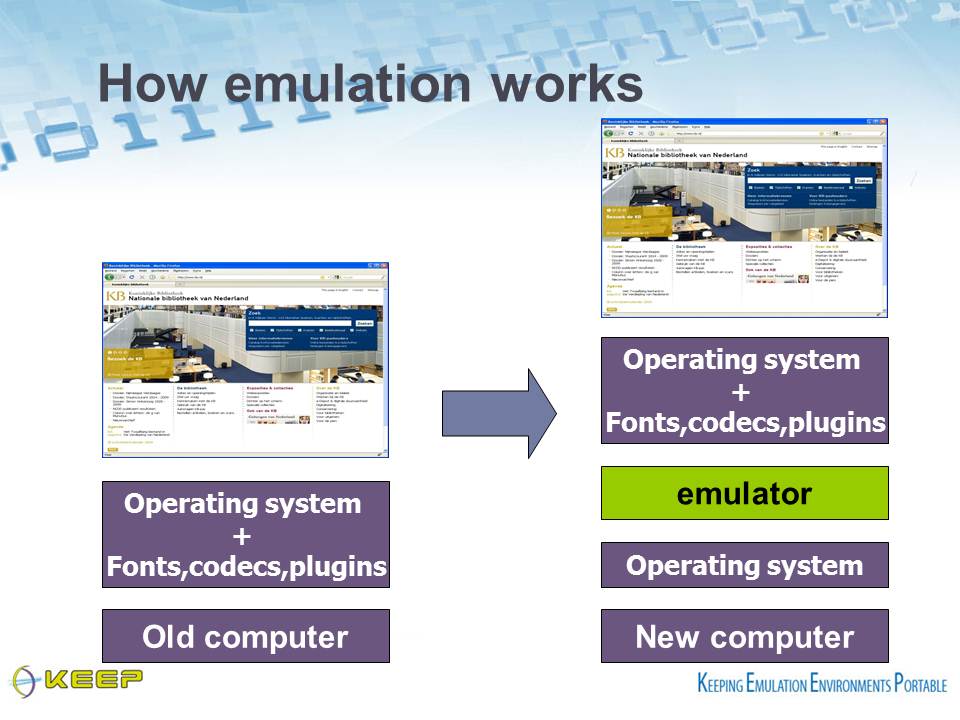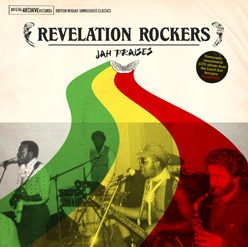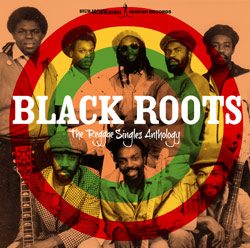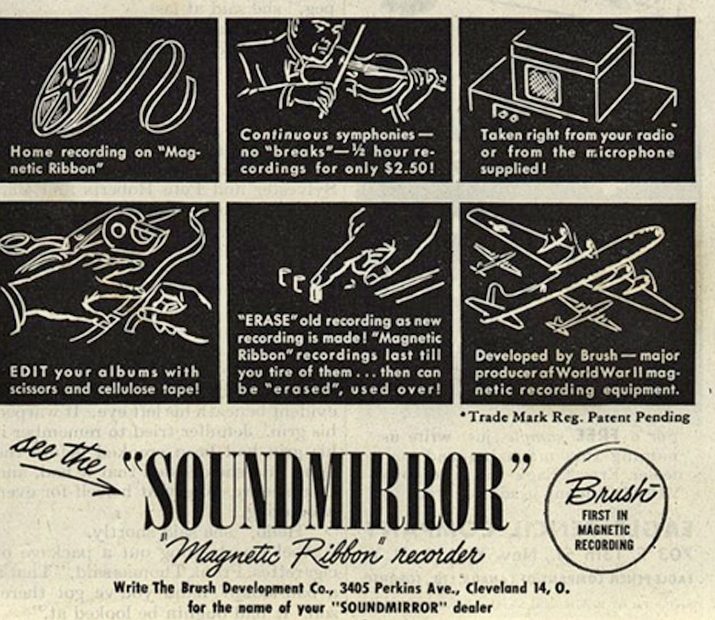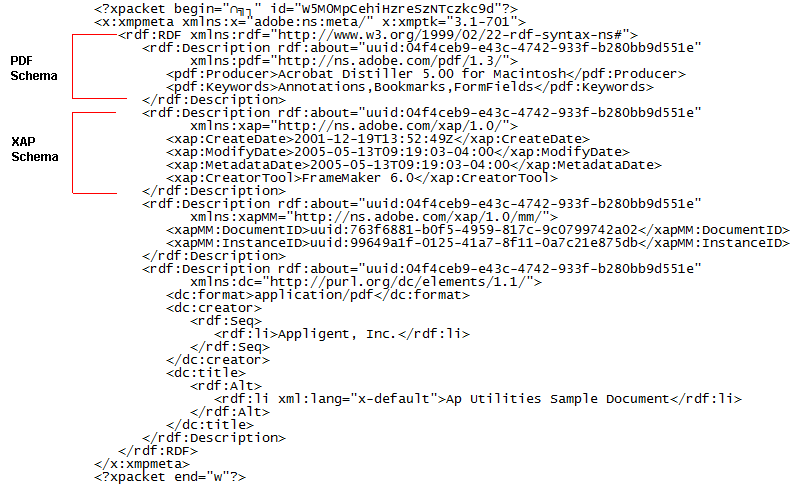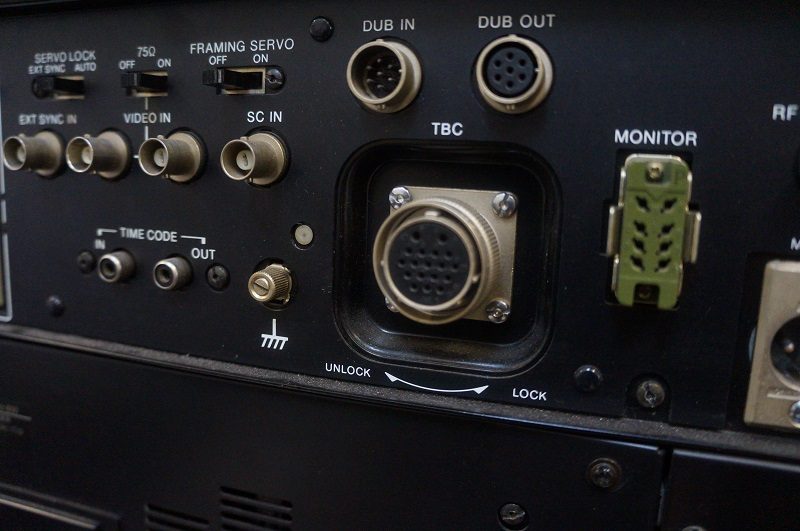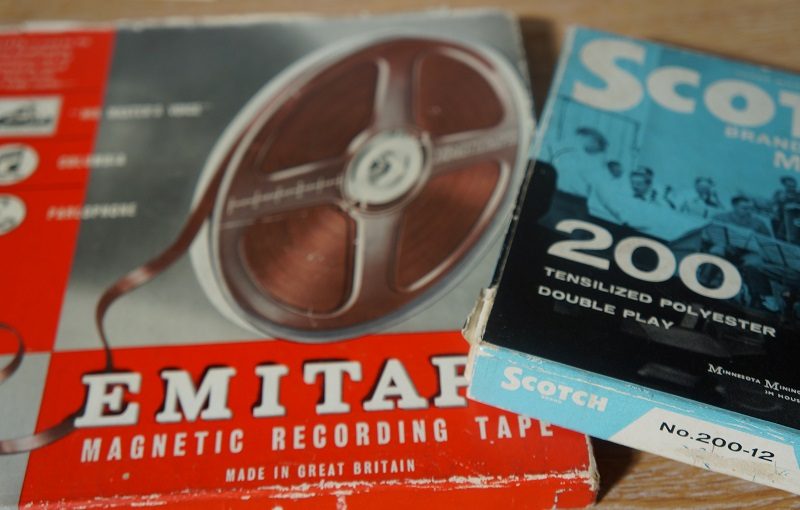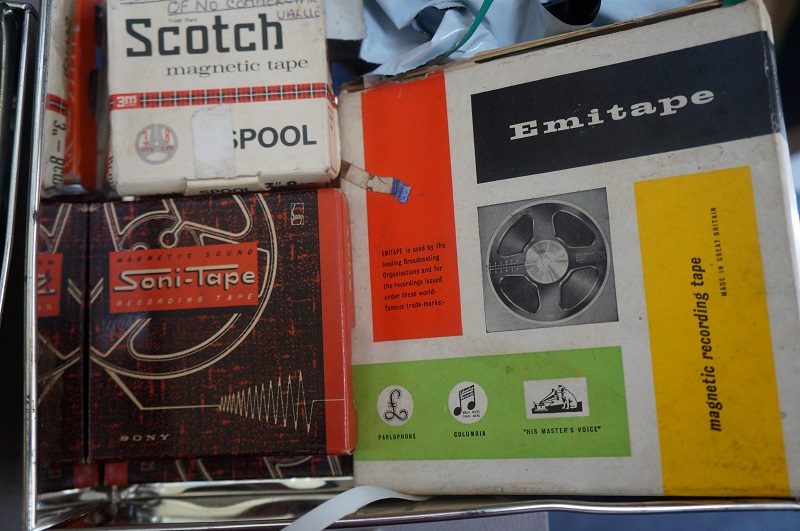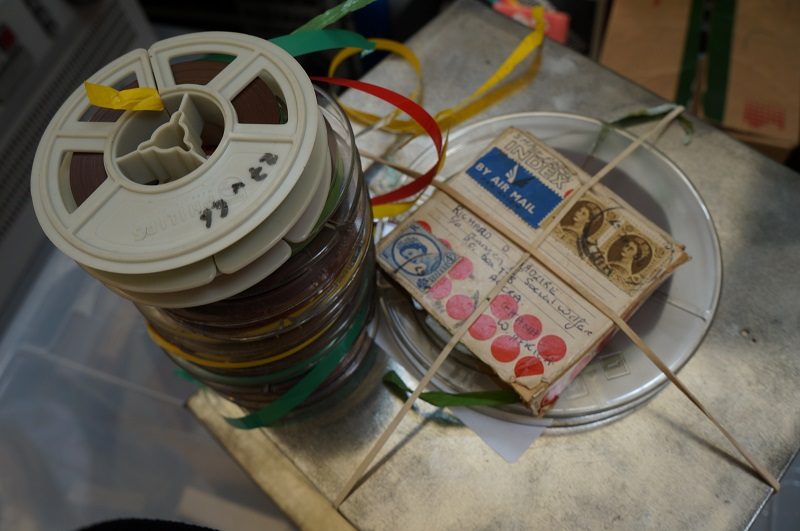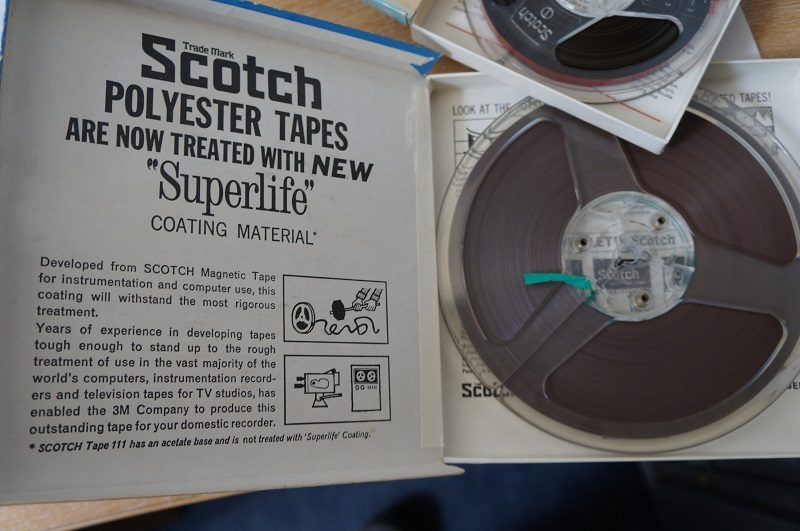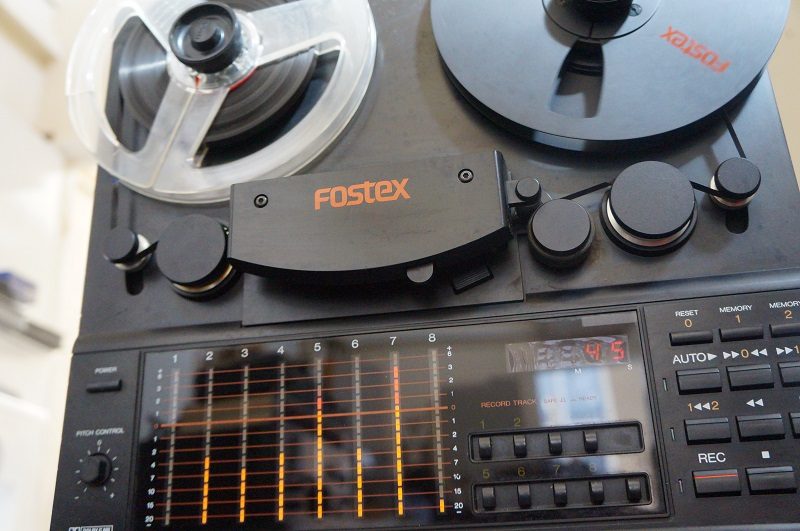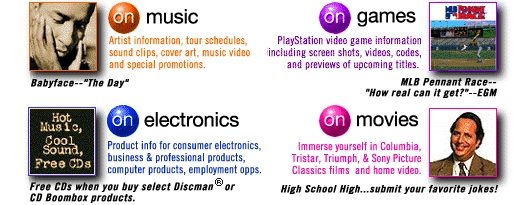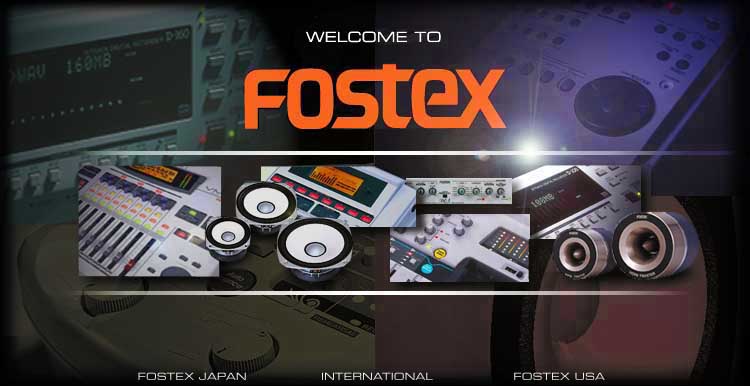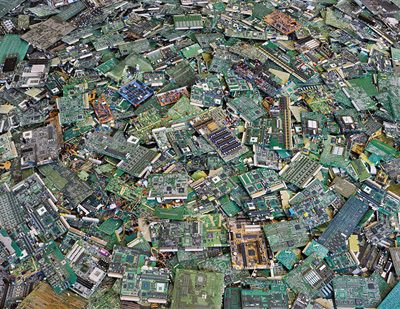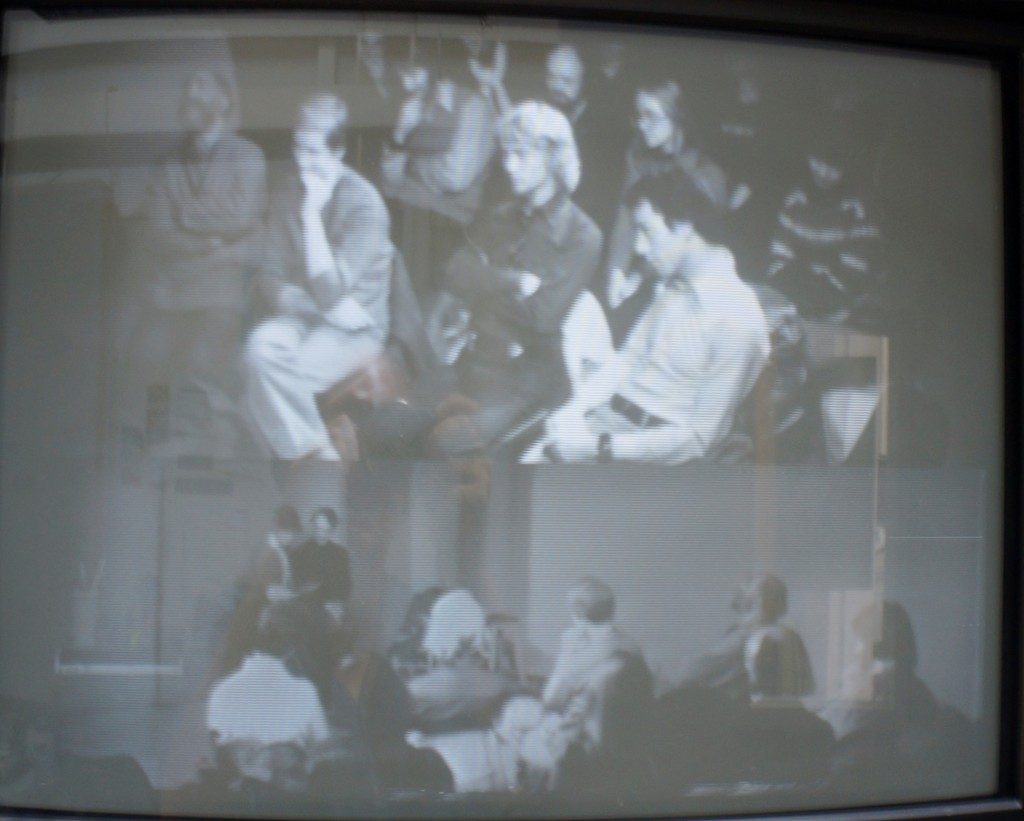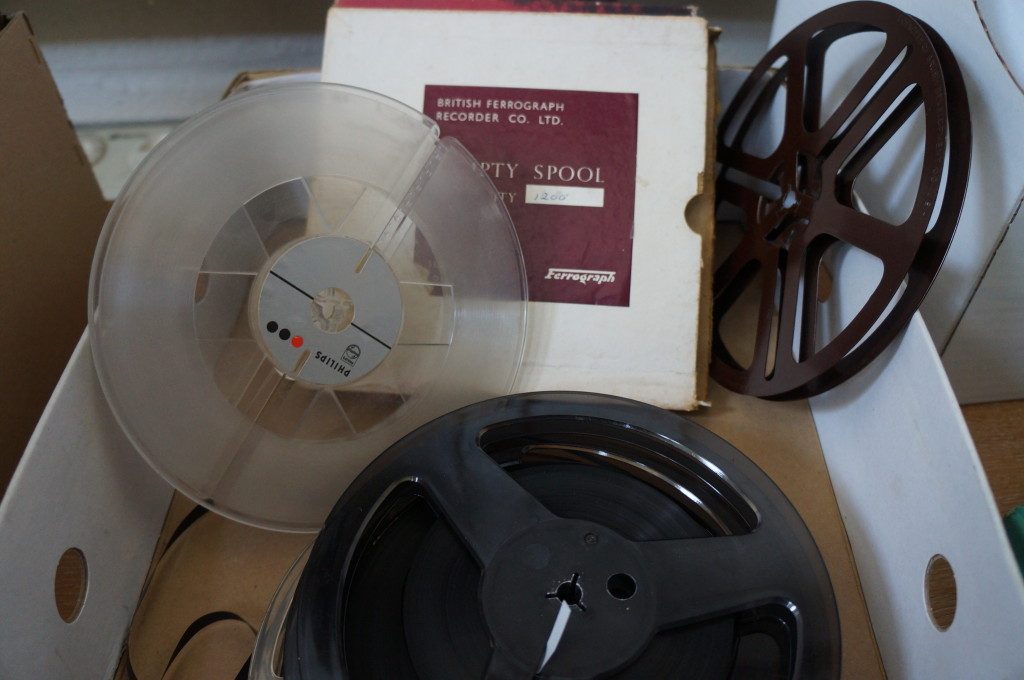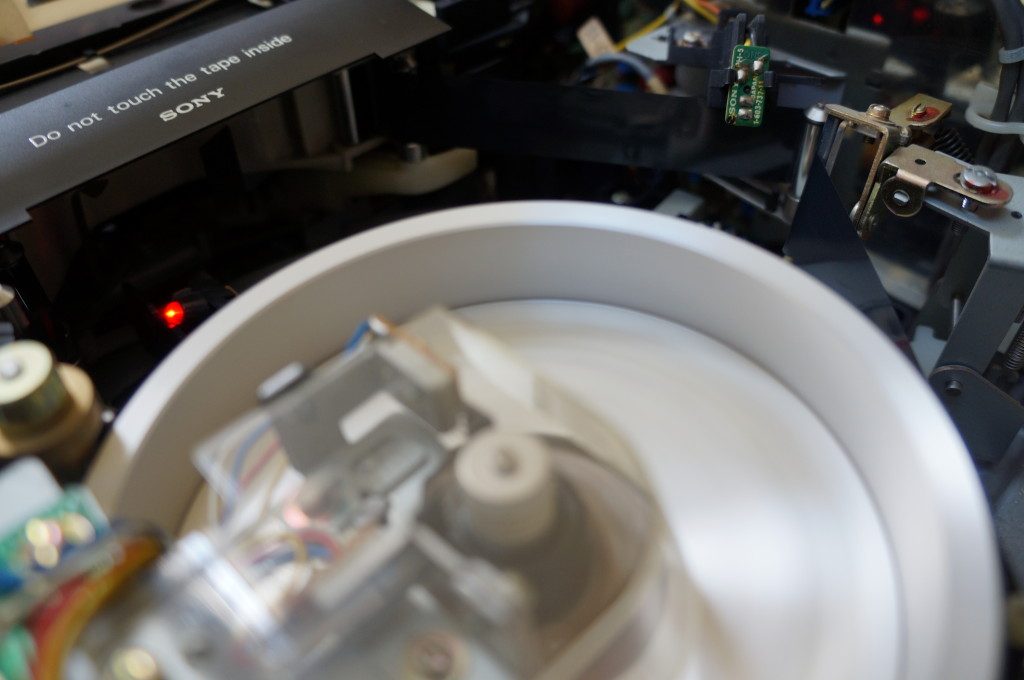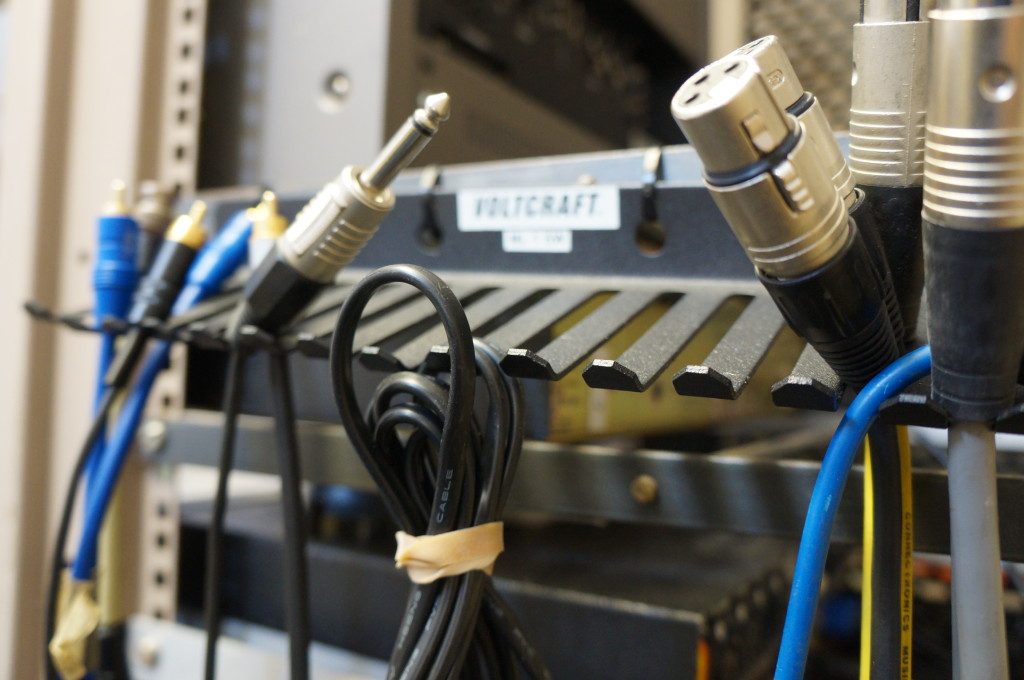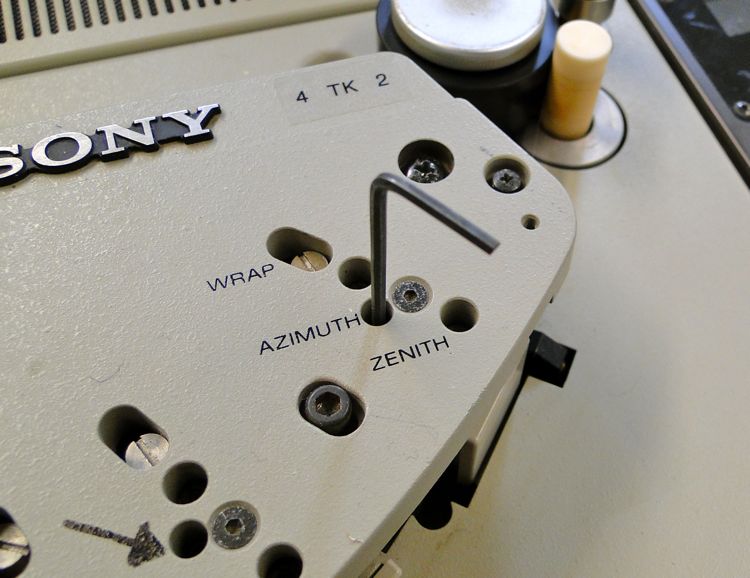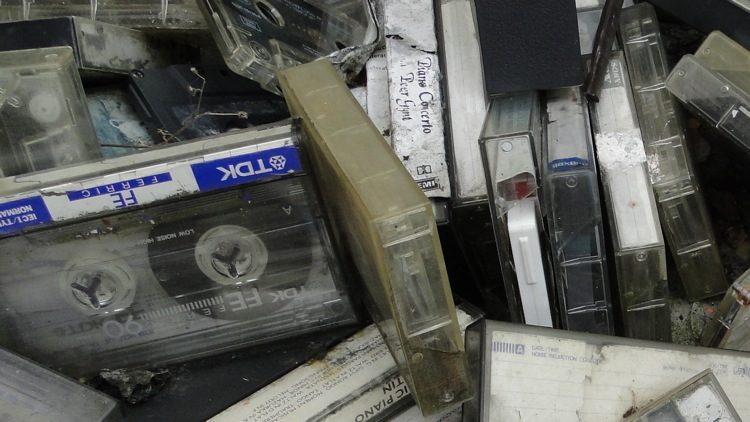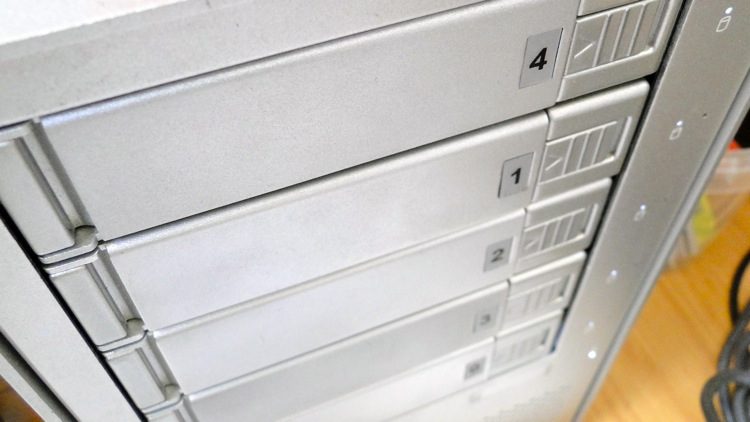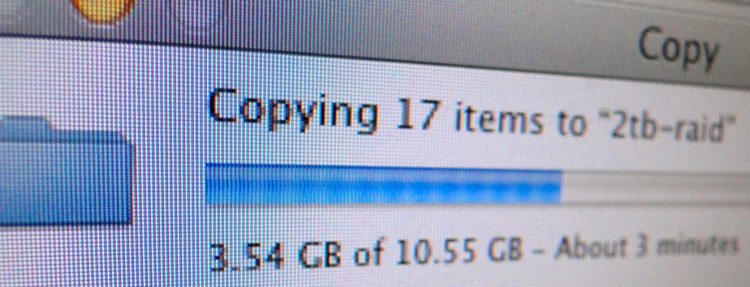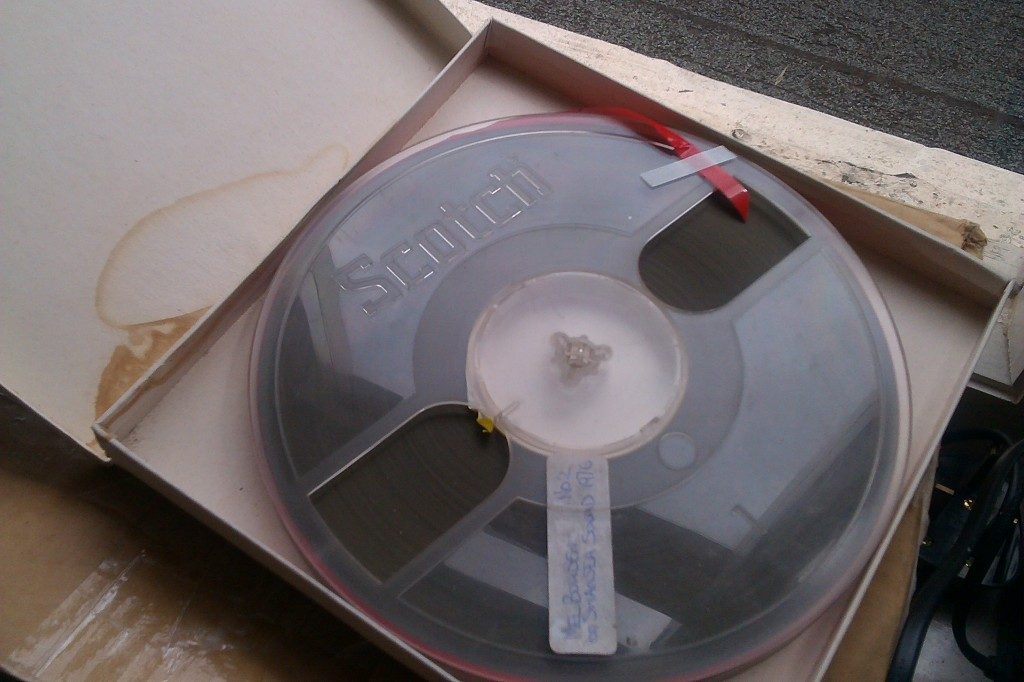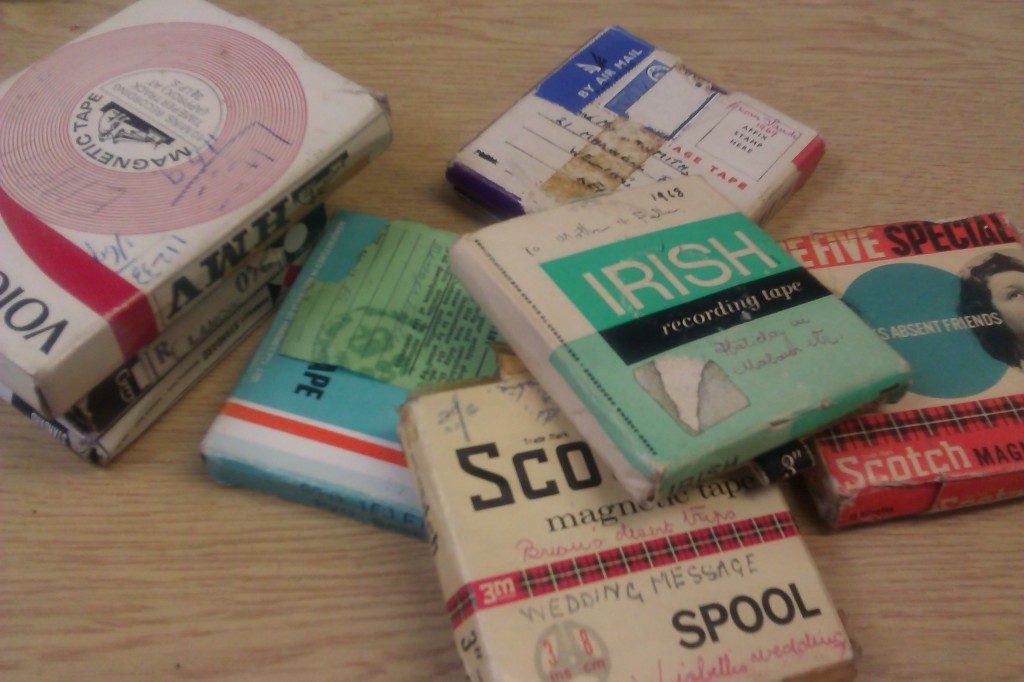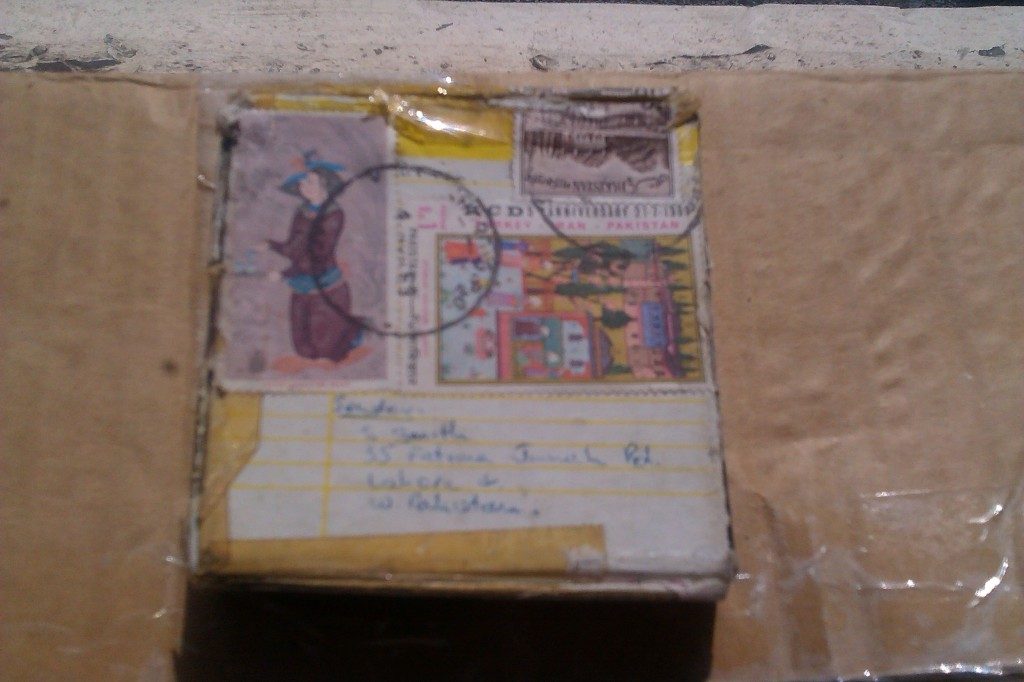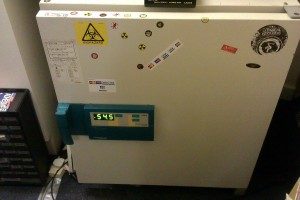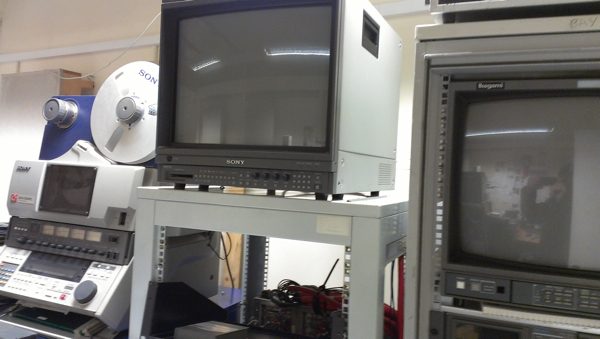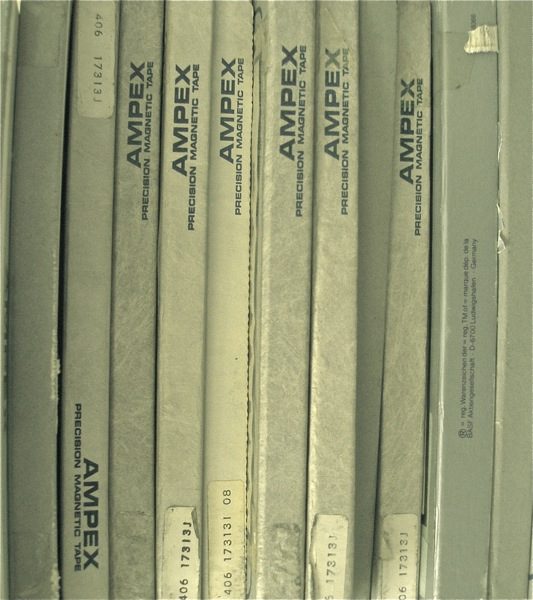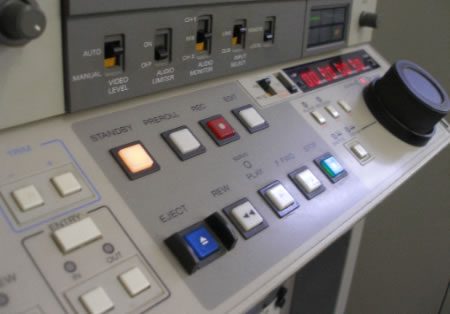Digital technologies have helped to salvage all manner of ‘lost’ or ‘forgotten’ recordings. Whole record labels, from the recently featured Bristol Archive Records to institutional collections like Smithsonian Folkways, are based on the principle of making ‘hard to access’ recordings available in digital form.

Occasionally we get such rare recordings in the Greatbear studio, and we are happy to turn the signal from analogue to digital so the music can be heard by new audiences. Last week we were sent a particularly interesting collection of tapes: a box of nearly 40 3”-10.5” reel to reel tapes from the songwriter and artist Jack Hollingshead, who sadly passed away in March 2013. The tapes are in good condition, although the spools are pretty dirty, most probably from being stored under the bed or at the back of a cupboard, as these things often are! Jack’s tape came to our attention after a phone call from the writer Stefan Granados, who wanted to arrange for a few songs to be digitised for a research project he is doing focused around the Beatles’ Apple Records company.
The Beatles set up Apple Records in 1968 as an outlet for their own and emerging artists’ recordings. Well known performers who were signed to Apple included Mary Hopkin, Ravi Shankar, James Taylor and many others. But there were also a number of artists who recorded sessions with Apple, but for one reason or another, their music was never released on the label. This is what happened to Jack’s music. Jack’s Apple sessions are psychedelic pop-folk songs with striking melodies, song cousins of drowsy Beatles hits like ‘Across the Universe’. He recorded seven songs in total, which we received on magnetic tape and acetate disc, the test cut of the recording that would have been printed on vinyl. We digitised from the magnetic tape because the disc was in fairly poor condition and we didn’t know how many times the disc had been played.
Listen to ‘Vote for ME’ by Jack Hollingshead
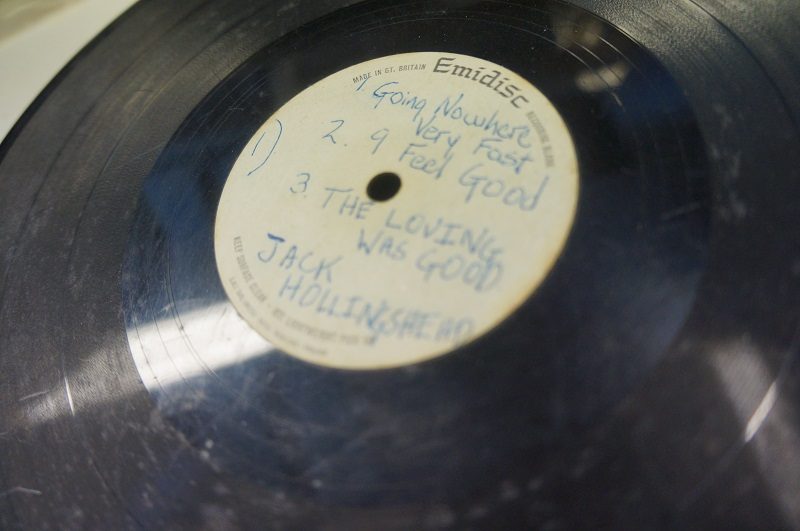
It wasn’t the first time that Jack’s work had aroused record company interest. When he was 16 he signed a contract with Aberbach publishers. Like his experience with Apple a few years later, nothing came of the sessions, and because the companies owned the recordings, he was not able to release them independently.
Jack soon became very frustrated by the record industry in the late 1960s and decided he would do it himself. This was ten years before home recording became widely accessible, so it was not easy, either financially or technically.
In the 1970s a series of serious accidents, and a spell in prison, proved to be disruptive for his musical career. Jack’s prison sentence, received for growing marijuana he was using for medical pain relief purposes, was however fairly positive. It gave him time to focus on playing guitar and he wrote his best songs while incarcerated.

The back of a test acetate is grooveless
He continued to write and record music throughout his life, and there is a significant amount of material that Trina Grygiel, who is responsible for managing Jack’s estate, is determined to organise and release in his memory.
Jack was also prodigiously talented artist in other mediums, and turned his hand to puppet making, wax painting, gardening and property restoration. His obituary described him as a ‘perfectionist, in all his artistic, creative and practical endeavours he would settle for nothing less.’


